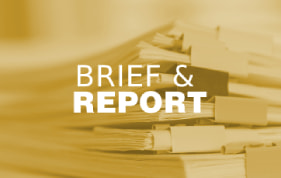This week, our In Focus features insights from the team of Health Management Associates (HMA) experts who attended the 2025 Home and Community-Based Services (HCBS) Conference. Over a handful of days, aging and disability leaders, state officials, health plans, providers, and advocates gathered to explore strategies to transform long-term services and supports. The event celebrated advances in cross-sector collaborations, evidence of program value, seamless access to care for older adults and people with disabilities, member engagement, and integrated care plans for dually eligible individuals.
HMA participants identified seven cross-cutting themes that are reshaping the aging and disability landscape. We examine how these themes connect to ongoing federal policy changes and provide actionable guidance for stakeholders looking to stay ahead of the curve in this evolving field.
Key Cross-Cutting Themes from the Conference
Executive Leadership Is Making the Difference
State leaders are developing new partnerships to continue progress toward meeting the needs of people with disabilities and aging adults across the lifespan. The conference showcased the significant progress that states have made by engaging governors and cabinet-level leaders. Pennsylvania’s aging department, for example, though small, leverages lottery funding and executive support to coordinate across departments and various strategic planning initiatives such as their Aging Our Way, PA multisector plan for aging.
North Carolina’s policy leadership in the governor’s office has been instrumental in aligning aging goals across state agencies such as the Department of Commerce on workforce initiatives and Department of Transportation which includes specific older adult needs in its planning.
Tennessee exemplified this approach by merging its Commission on Aging and Disability with the Department of Intellectual and Developmental Disabilities to establish a single cabinet-level Department of Disability and Aging.
This executive engagement enables what Kathy Greenlee, former ACL Administrator, emphasized: building partnerships beyond traditional aging and disability networks including connections with children and families programs that share common goals around caregiver support and prevention.
Technology Is Extending Human Capacity, Not Replacing It
Technology took centerstage as one of the major solutions to providing personalized caregiver supports and extending the capacity of human services. States are embracing AI (artificial intelligence)-powered tools for routine tasks like call transcription and resource database management, while maintaining human oversight for complex client interactions.
The most successful approaches recognize what MIT AgeLab’s Joe Coughlin highlighted, “High tech won’t replace the need for high touch, but high touch is in short supply.” Technology networks can stretch caregiver capacity, but the human element remains essential. The next generation of service professionals must be tech-savvy integrators who combine digital tools with caring relationships. Key technological advances include digital and virtual coaching platforms, AI precision analytics for risk identification, and “home intelligence” systems that support aging in place. Success, however, depends on ensuring these tools enhance rather than replace human connection.
Direct Care Workforce Crisis Demands Immediate Action
Leading states are not just attempting to manage workforce shortages; they are working on comprehensive workforce infrastructure solutions. Wisconsin’s Certified Direct Care Professional program enrolled over 3,400 workers in its first year, reduced turnover rates, and created a statewide registry where employers actively recruit graduates. Michigan developed four-level stackable credentials that transform direct care into respected career pathways.
States are deploying integrated workforce platforms that combine multiple solutions, including worker registries that promote workforce access and transparency, learning management systems that strengthen development through credentialing, and job matching that enhances access to quality care, and data insights that support evidence-based decisions.
Missouri demonstrates effective stakeholder engagement through its Direct Support Worker Advisory Panel, where 15 workers provide feedback on rates, documentation, scheduling, and professional development while being compensated in developing the solutions, for example, by including them in official advisory entities.
Forward-thinking organizations are breaking down silos through cross-sector partnerships. Area Agencies on Aging and Centers for Independent Living are cross-training workers to serve both populations, effectively expanding the available workforce capacity. Technology integration scales solutions through online, self-paced training that accommodates work schedules and diverse learning needs, while states use federal funding and Medicaid rate increases to boost wages and implement recognition strategies that elevate professional status.
Evidence-Based Investment Strategies
States shared the power of systematic, data-driven approaches to secure aging and disability investments. Ohio’s disciplined four-step process—identify priorities, determine evidence-based interventions, quantify return on investment, and operationalize results—resulted in $40 million in legislative funding for Healthy Aging Grants.
Under this reframing, aging can now be seen as an opportunity rather than a burden. States are building ecosystems and partnerships to enhance reach and effectiveness. This positions aging investments as competing priorities capable of delivering measurable returns. Wisconsin’s new Certified Direct Care Professional certification with career ladder pathways exemplifies how evidence-based workforce strategies can address critical shortages while improving quality.
The Urban Institute’s research on benefit uptake reveals that nearly 9 million older adults are eligible for programs they don’t receive. Success factors include coordinated state agencies, streamlined applications, community trust-building, and staff training—all areas where evidence-based approaches can guide improvement.
Holistic Support for Caregivers and Care Members
The conference emphasized a fundamental shift from viewing caregivers as invisible helpers to recognizing them as partners who require comprehensive support. Key elements for achieving caregiver-driven outcomes include providing support, guidance, and assistance while measuring burden, resilience, satisfaction, and finally, the intent to remain in home settings. Medicare now covers ADL/IADL supports through new coding structures, reflecting growing recognition of how caregiver skill-building adds value. This holistic approach extends to addressing the question of who replaces the family caregiver, as older adults increasingly live alone. The answers rest with the development of new partnerships with retailers, pharmaceutical companies, and employers, plus technology that enables remote family support.
Cross-Sector Collaborations: Systems Integration as Survival Strategy
Breaking down silos that have historically separated aging, disability, children and families, and health services resonated throughout the conference. Kentucky observed that states struggle with multiple uncoordinated plans, each with different goals and measures.
Several states have demonstrated successful integration strategies, such as aligning funding streams, creating shared governance structures, and using common metrics across traditionally separate systems. North Carolina’s approach of embedding aging considerations in transportation planning and commerce workforce development shows how integration can extend beyond human services.
From a federal perspective, integration has support. As Greenlee noted, the Administration for Children, Families, and Communities includes “communities” in its title as a signal of broader inclusion. States that build partnerships across these traditionally separate areas will be better positioned for future federal funding and policy changes.
MLTSS as a Critical Vehicle for Whole-Person Care
Managed Long-Term Services and Supports (MLTSS) programs are evolving an infrastructure for providing coordinated and integrated care delivery care. As this transformation occurs, states must have adequate oversight capacity to manage MLTSS programs effectively.
Effective MLTSS programs can help people early enough to prevent nursing facility placement by integrating all services including medical, behavioral, and HCBS and social supports through capitation. Plans should allocate resources to support provider technological investments that facilitate improved care coordination. This technological support becomes essential to maintaining the high-touch, personalized services that MLTSS members require while achieving the scale necessary for program sustainability.
Policy Connections: From Conference Themes to Federal Action
These conference themes reflect broader federal policy shifts, including:
- New funding must be used more strategically. The $10 billion annually for rural health transformation (2026‒2030) can also create opportunities to integrate aging services into the broader health infrastructure.
- Resource constraints sparks innovation. As the Administration for Community Living faces resource constraints with significant staff reductions, states must be more proactive and resourceful in developing innovative programs.
- Advocacy must be timed. Upcoming budget cycles require strategic timing for advocacy efforts.
The Road Ahead for Stakeholders
Organizations across the aging and disability ecosystem must prepare for a more integrated, technology-enhanced, and evidence-driven environment. Success will require executive leadership, strategic partnerships, and measurable value.
State Agencies
- Engage executive orders establishing aging as a priority across all state departments.
- Developing systematic evidence-based investment strategies that quantify return on investment for aging initiatives, using Ohio’s four-step methodology as a template.
- Building partnerships beyond traditional aging and disability networks, including with children and family services, workforce development, and transportation agencies.
- Implementing workforce development strategies that include investing in credentialing and tech-enabled training, and cross-sector partnerships to address to strengthen the direct care workforce.
Health Plans and Payers
- Implementing holistic caregiver support programs that combine digital tools with human coaching, measuring outcomes like burden reduction and care member satisfaction.
- Leveraging new Medicare coding opportunities for ADL/IADL supports to pay for evidence-based caregiver training and skill-building programs.
- Partnering with technology companies to deploy AI-powered risk identification tools while maintaining human oversight for member interactions.
- Investing in provider technology infrastructure that enables better care coordination and supports MLTSS program effectiveness.
Providers and Community Organizations
- Developing technology-enhanced service delivery that extends human capacity while preserving personal connection, following the “high tech, high touch” principle.
- Pursuing evidence-based training and credentialing programs with clear career pathways.
- Building partnerships with non-traditional allies like retailers, pharmaceutical companies, and employers to expand aging-in-place support networks.
- Participating in workforce development initiatives that create shared worker pools across aging and disability services.
Technology Vendors
- Developing AI-powered tools that enhance rather than replace human service delivery, focusing on routine tasks like documentation and risk assessment.
- Creating integrated platforms that support cross-system coordination between aging, disability, health, and family services.
- Building home intelligence systems that enable remote family caregiving and professional monitoring while preserving independence and dignity.
- Designing workforce development platforms that support credentialing, job matching, and career advancement tracking.
Moving Forward Together
The 2025 HCBS Conference revealed a field that is embracing innovation and integration. States leading this transformation share common characteristics: executive leadership, evidence-based investment strategies, technology that enhances human connection, holistic support approaches, and systems that collaborate to break down traditional silos.
The path forward requires strategic planning, rigorous evaluation, cross-sector partnerships, and sustained political will. Organizations that can integrate evidence-based approaches with compassionate care, leverage technology to extend human capacity, build partnerships that transcend traditional boundaries, and develop sustainable workforce solutions, will be best positioned to serve the growing population of older adults and people with disabilities.
Connect with Us
The HCBS Conference highlighted significant momentum toward integrated service delivery, evidence-based investment, and technology-enhanced care. Stakeholders should expect continued federal policy evolution, including new funding opportunities and partnership requirements in the coming years. Organizations that wait will miss critical opportunities. HMA works with state agencies, health plans, providers, and community organizations to design and implement aging and disability initiatives. We help clients engage executive leadership, develop evidence-based business cases, deploy appropriate technology solutions, build cross-sector partnerships, and create sustainable workforce development strategies. To discuss how these trends affect your organization and explore next steps, contact our featured experts below.




















